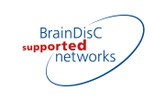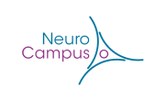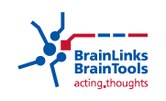Friedemann Pulvermüller, Brain Language Laboratory, Freie Universität Berlin | Neuromechanistic Perspectives On Cognition and Language
| When |
Mar 07, 2017
from 05:15 PM to 06:45 PM |
|---|---|
| Where | BCF Lecture Hall, Hansastr. 9a |
| Contact Name | Prof. Dr. Ad Aertsen |
| Add event to calendar |
|
Abstract
Cognitive theory has decomposed human mental abilities into cognitive (sub-) systems and cognitive neuroscience succeeded in disclosing a host of relationships between cognitive systems and specific structures of the human brain. However, an explanation of why specific functions are located in specific places had still been missing, along with a neurobiological model that makes concrete the neuronal circuits that carry thoughts and meaning. Brain theory now offers an avenue towards explaining brain-mind relationships and to spell out cognition in terms of neuron circuits in a neuromechanistic sense. Central to this endeavor is the theoretical construct of an elementary functional neuronal unit above the level of individual neurons and below that of whole brain areas and systems: the distributed neuronal assembly (DNA) or thought circuit (TC). I will argued that DNA/TC theory of cognition offers an integrated explanatory perspective on brain mechanisms underlying a range of cognitive processes, including perception, action, language, attention, memory, decision, and conceptual thought (1,2). DNAs are proposed to carry all of these functions and their inner structure (e.g., core and halo subcomponents) along with their functional activation dynamics (e.g., ignition and reverberation processes) explain crucial questions about cortical localization of cognitive function, including the question why memory and decisions draw on frontoparietal ‘multi-demand’ areas although memory formation is normally driven by information in the senses and in the motor system. We suggest that the ability of building DNAs/TCs spread-out over different cortical areas is the key mechanism for a range of specifically human sensorimotor, linguistic and conceptual capacities and that the cell assembly mechanism of overlap reduction is crucial for differentiating a rich vocabulary of actions, symbols and concepts (3).
Literature
- Pulvermüller, F. (2013). How neurons make meaning: Brain mechanisms for embodied and abstract-symbolic semantics. Trends in Cognitive Sciences, 17(9), 458-470.
- Pulvermüller, F., & Fadiga, L. (2010). Active perception: Sensorimotor circuits as a cortical basis for language. Nature Reviews Neuroscience, 11(5), 351-360.
- Pulvermüller, F., Garagnani, M., & Wennekers, T. (2014). Thinking in circuits: Towards neurobiological explanation in cognitive neuroscience. Biological Cybernetics, 108(5), 573-593. doi: 10.1007/s00422-014-0603-9











